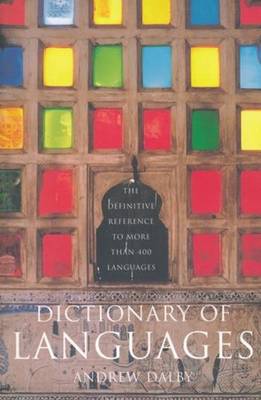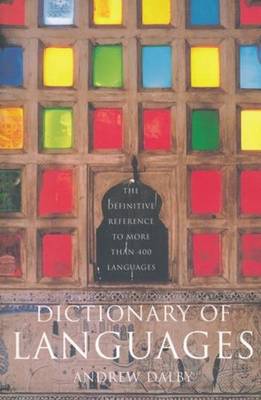
Je cadeautjes zeker op tijd in huis hebben voor de feestdagen? Kom langs in onze winkels en vind het perfecte geschenk!
- Afhalen na 1 uur in een winkel met voorraad
- Gratis thuislevering in België vanaf € 30
- Ruim aanbod met 7 miljoen producten
Je cadeautjes zeker op tijd in huis hebben voor de feestdagen? Kom langs in onze winkels en vind het perfecte geschenk!
- Afhalen na 1 uur in een winkel met voorraad
- Gratis thuislevering in België vanaf € 30
- Ruim aanbod met 7 miljoen producten
Zoeken
Dictionary of Languages
The Definitive Reference to More Than 400 Languages
Andrew Dalby
Paperback | Engels
€ 37,45
+ 74 punten
Uitvoering
Omschrijving
Approximately how many languages compose the Bantu language group of central and southern Africa? What is the name of the language spoken in Hawaii by an estimated two thousand people? What Western European language is not known to be related to any other language family in the world--and is considered by linguists to be one of the most difficult to learn?
These are only a few of the questions language lovers, linguists, and lay readers will be able to answer with the Dictionary of Languages--an easy-to-navigate, authoritative guide to the world's languages and language groups at the end of the twentieth century. Andrew Dalby had the needs and interests of general readers in mind when he compiled this comprehensive reference work--most other language guides are written for scholars, and many include little or none of the absorbing social, cultural, geographic, and historical details that are brought together here. In the Dictionary of Languages, readers will find: -a selection of four hundred languages and language groups, arranged alphabetically, with rich, detailed descriptions of the genesis, development, and current status of each; -more than two hundred maps displaying where the languages are spoken today; -sidebars showing alphabets, numerals, and other enriching facts -a comprehensive index listing additional languages, guiding readers to the nearest language groups with full writeups and maps; -charts breaking down large language groups--such as Bantu or Austroasiatic languages--by geographic region and approximate number of speakers. In a world where geopolitical boundaries often explain little about the people that live within them, where we may read about Kurd and Khmer in the same newspaper and be expected to be conversant about each--if not conversant in each--Dalby's single, information-packed volume helps us make sense of the rich mosaic of world languages.Specificaties
Betrokkenen
- Auteur(s):
- Uitgeverij:
Inhoud
- Aantal bladzijden:
- 800
- Taal:
- Engels
Eigenschappen
- Productcode (EAN):
- 9780231115698
- Verschijningsdatum:
- 10/03/2004
- Uitvoering:
- Paperback
- Formaat:
- Trade paperback (VS)
- Afmetingen:
- 152 mm x 234 mm
- Gewicht:
- 975 g

Alleen bij Standaard Boekhandel
+ 74 punten op je klantenkaart van Standaard Boekhandel
Beoordelingen
We publiceren alleen reviews die voldoen aan de voorwaarden voor reviews. Bekijk onze voorwaarden voor reviews.









